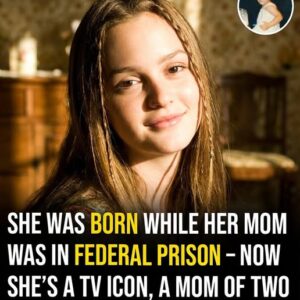Chapter 1: An Unforgettable Day of Celebration
When my daughter Jane walked down the aisle that day, nothing about the scene was as we had planned. We had spent months perfecting every detail—from the carefully chosen venue to the elegant floral arrangements—and especially the wedding dress. Jane’s dream had always been to wear an ivory gown, a timeless symbol of purity and celebration. But on that fateful day, as she stepped into the ceremony, the dress that enveloped her was not the soft ivory we had envisioned. Instead, it was a garment as black as midnight. And while the color shocked everyone at first, it soon became clear that the real disaster was not the hue of the dress, but the profound reason behind it.
I still remember the moment when Jane called me on that long-anticipated day. Her voice, bubbling with excitement and a hint of urgency, reached me over the phone.
“Mom! He proposed!” she nearly shouted, unable to contain her joy.
At that moment, I recalled all the signs that had led up to this milestone. Jane and Jack had been together for five years—a relationship that, to me, had always seemed filled with promise and happiness. I had believed wholeheartedly that they were destined for a future of mutual love and commitment. In my mind, the wedding planning was a natural progression, an extension of the love they had nurtured over the years. And the dress, painstakingly designed and meticulously crafted by my best friend Helen—a renowned local seamstress—was to be the crowning glory of Jane’s special day.
Chapter 2: Dreams, Designs, and the Promise of Perfection
From the very start of the wedding planning process, Jane had insisted on something unique. She rejected off-the-rack options; she wanted a dress that would capture her individuality and make a statement. Helen had been thrilled to take on the project, sketching designs that reflected Jane’s style—a blend of classic elegance and modern flair. For months, Helen worked tirelessly, pouring her heart into every stitch, every bead, and every delicate fold of fabric. The design was an intricate composition of ivory satin and lace, accented by a long, flowing train that promised to evoke images of romance and timeless beauty.
I vividly recall the day when I saw the nearly finished dress. The fabric shimmered under the soft lighting, and the subtle details of lace and embroidery left no doubt that the dress was exactly what Jane had always dreamed of. Ivory, delicate, and gracefully poised to make her look like a true princess on her wedding day—the vision was flawless, and everything seemed to be falling perfectly into place.
Chapter 3: A Prelude to Uncertainty
As the wedding day approached, excitement filled our home. The living room was abuzz with the arrival of the makeup artist and the bridesmaids bustling about with last-minute preparations. Jane, radiant and full of hope, sat before the mirror as her hair and makeup were meticulously done. The atmosphere was one of joyful anticipation, and every detail had been carefully orchestrated to ensure that the day would be unforgettable.
However, beneath the veneer of celebration, subtle hints of unease began to surface. The night before the wedding, I noticed a change in Jack’s demeanor. Jack, who was known for his warm smile and reassuring presence, seemed distant. That evening, at his parents’ home, while the family gathered for a relaxed dinner, I could sense that something was off. Amid the laughter and shared stories, Jack’s usual easy charm was replaced by brief, almost imperceptible moments of distraction. He answered questions with a terse politeness, and I observed the tension in his eyes—an emotion that I could not quite place.
At the dinner table, conversation flowed easily until an innocent comment from Jack’s niece, Allison, shifted the mood dramatically. Allison, a young woman fresh out of nursing school and employed at the hospital where Jack supposedly worked, casually inquired about his presence at work.
“Uncle Nate, I was really hoping to see you at the cardiology unit today. I never seem to catch you there!” she remarked with genuine enthusiasm.
Jack responded without missing a beat, “Oh, I move between departments a lot. It’s hard to pin me down.” His tone was light, intended to reassure. Yet Allison, full of innocent curiosity, pressed on: “How many patient rooms does your unit have—eighteen, right?”
Without hesitation, Jack answered, “Yes, eighteen.”
Allison’s eyes sparkled as she added, “Really? Because I thought it was twenty-five rooms. That would mean you’re handling even more patients than I imagined!”
A silence fell over the table. In that charged moment, I watched Jack closely. His hand, which had been resting gently on my thigh—a familiar gesture of comfort—suddenly began to tremble ever so slightly. His smile wavered, and his eyes, usually so full of confidence, betrayed a flicker of uncertainty.
The conversation quickly moved on, and Allison continued chatting with the rest of the family, unaware of the tension she had unwittingly sparked. But the incident left an indelible mark on my mind. I found myself questioning the picture I had so carefully built of our future. Had I been blind to the signs? I could not shake the feeling that something was amiss—a nagging doubt that, despite all the planning and hope, the truth about our lives was far more complicated than I had ever imagined.
Chapter 4: The Unanswered Calls and the Quest for the Truth
The following day, as the wedding day dawned bright and clear, the house was filled with the hum of final preparations. The excitement of the day was palpable, yet an undercurrent of anxiety persisted. Throughout the morning, I attempted to reach Jack on his phone for a few words of reassurance. Each call went unanswered; each attempt ended with a voicemail. By late afternoon, my concern grew into unease. It was not like Jack to remain unreachable, especially on such an important day.
After waiting for an hour, I decided to take a more direct approach. I called the hospital, determined to verify the details I had long taken for granted. The receptionist answered politely, “Good afternoon, Lakeside Hospital. How may I help you?”
“Hello,” I said hesitantly, “I’m trying to reach my husband, Dr. N. Carter. His phone appears to be off. Could you please relay a message?”
There was a pause before the receptionist responded, “I’m sorry, ma’am. Could you please repeat the name?”
“Nathan. He works in the cardiology department.”
The silence that followed was disconcerting. After a few moments of typing, the receptionist said softly, “I’m sorry, ma’am. We do not have a Dr. N. Carter on staff.”
I laughed, trying to convince myself that there must be some mistake. “That can’t be right,” I said, “He has been working there for six months now.” I pressed further, “Is it possible he is listed under a different department?”
The receptionist’s response was firm and final: “I have checked all departments, and I’m sorry, but there is no Dr. N. Carter in our system.”
At that moment, my heart began to race. I thanked her and ended the call, feeling an icy dread settle in my chest. Desperation overtook me as I quickly accessed the hospital’s online directory. Scrolling through the list of staff, I searched for any trace of the name that had meant so much to me. But there was nothing. Not a single mention.
I sat there, stunned, as the gravity of the situation sank in. The man I had believed to be a devoted doctor, the very symbol of hope and healing in my life, was nowhere to be found in the official records. Had I been living a lie? The questions churned inside me, relentless and unyielding.
Chapter 5: Confronting the Reality
Unable to contain my turmoil, I immediately drove to the hospital. The drive was a blur of conflicting thoughts and emotions—each mile a painful reminder of the trust that had been so carefully nurtured and now appeared to be collapsing. When I arrived, the sterile scent of antiseptic and the soft murmur of activity in the lobby did little to ease my anxiety. I marched up to the front desk and demanded answers.
“There has to be a mistake,” I stated firmly to the receptionist, “I called earlier about my husband, Dr. N. Carter. He works here.”
The receptionist looked at me with a mixture of concern and uncertainty. Before she could respond further, a calm voice spoke from behind me. “Mrs. Carter?”
I turned to see a doctor in a white coat standing a few feet away. His expression was measured and serious, and his gaze conveyed an urgency that immediately put me on edge.
“I know your husband,” he said softly. “Please, follow me. We need to talk in a private room.
I followed him down a quiet corridor, each step weighted with dread and unanswered questions. Once we were in a small, closed office, he began to speak in a measured tone.
“Mrs. Carter, I’m very sorry, but your husband does not work here as a doctor. The truth is, he is a patient.”
Those words hit me like a tidal wave. For several long moments, I could only stand there, stunned and disbelieving. “No,” I whispered, shaking my head as if to dispel the absurdity of what I was hearing. “That cannot be possible.”
The doctor sighed deeply, his compassion evident in his eyes, and then reached for a folder on the desk. With trembling hands, I opened it. Inside, I found a series of medical reports, test results, and diagnostic records. As I carefully read through the documents, the horrifying truth became undeniable. The records confirmed that my husband had been undergoing treatment—and not just routine care. He was battling an aggressive illness, and the diagnosis was grim: Stage IV cancer.
The realization was overwhelming. Every unanswered call, every subtle hesitation during that family dinner, and every moment of unexplained behavior now converged into a single, crushing truth: The man I had trusted implicitly was not the accomplished doctor I had believed him to be. Instead, he had been concealing his own vulnerability, his own fight for survival.
Chapter 6: The Confrontation and the Unraveling of Deception
My emotions surged as I demanded answers. “Nathan,” I said, my voice trembling, “why would you lie to me? Why did you hide this from me for so long?”
Before the doctor could offer further explanation, I felt a profound need to see him—to confront the man I had known for years. The doctor gently informed me that Nathan was waiting in a private patient room. With a heavy heart and a pounding chest, I followed him down a long, sterile corridor. The fluorescent lights above cast stark shadows on the walls, and each step seemed to echo the crushing weight of betrayal.
When I finally entered the room, I saw Nathan sitting on the edge of the hospital bed. The transformation was dramatic. The once vibrant and confident man now appeared markedly thinner, his skin pale, and the dark circles under his eyes more pronounced than ever. He was dressed in a hospital gown instead of his usual crisp attire, and his posture betrayed the immense physical and emotional toll his illness had taken on him.
Our eyes met, and in that silent exchange, I saw everything—the guilt, the fear, and the sorrow he had tried so desperately to hide. He slowly looked up and began to speak, his voice barely audible at first.
“I was going to tell you,” he said, his tone filled with regret. “I—I didn’t want to burden you. I thought I could handle it on my own.” His eyes searched mine for understanding, but all I could feel was the deep sting of betrayal.
I took a step closer, my heart heavy with both anguish and the desperate need for answers. “When were you going to tell me, Nathan? When was the right time?” I whispered, barely able to contain the hurt in my voice. “Were you planning to wait until after I had to say goodbye?”
The pain in his eyes was unmistakable. “I was scared,” he confessed softly. “Scared of losing you, scared of what you’d think of me. I thought if I could keep it hidden, maybe I could fight this on my own, without dragging you into the nightmare.”
he words, meant to soothe, only deepened the wound. I struggled to reconcile the man I had loved with the man now lying before me—a man who had chosen to protect me by sacrificing our trust. “You lied to me,” I said, my voice choked with emotion. “You robbed me of the chance to be there for you, to help you face this.”
Nathan’s eyes welled with tears as he reached out for my hand. “I did it because I thought I was protecting you. I thought that if I could bear this burden alone, I wouldn’t have to watch you suffer.” His voice broke as he continued, “I was wrong, and I’m so sorry.”
I could only nod in response, my own tears threatening to spill over. In that quiet, sterile room, amidst the beeping of monitors and the low hum of the air conditioner, the full weight of our shared pain became evident. It was a moment of profound loss—not only the loss of the man I thought I knew but also the loss of the illusion of perfect trust that had once defined our relationship.
Chapter 7: The Journey Toward Rebuilding
In the weeks that followed, our lives were irrevocably changed. The shock of Nathan’s secret left us both reeling, and the reality of his condition loomed large over every conversation, every silent moment. The hospital became a second home as I accompanied him to every appointment, every treatment session. In the sterile corridors of the medical center, amidst the low murmur of doctors and the hum of machines, I witnessed firsthand the toll that his battle had taken on his body and spirit.
At home, the atmosphere was heavy with unspoken words. Our once joyful routines were now punctuated by the constant reminder of the truth we had uncovered. Yet, in the midst of our shared sorrow, a new resolve began to take shape—a commitment to face the future together, no matter how uncertain it might be.
I sought counseling to help process the overwhelming emotions of betrayal, grief, and uncertainty. In therapy sessions, both individually and as a couple, we began to explore the roots of our pain. I learned that the trust we had built over eight years was fragile, a delicate construct that could be shattered by a single hidden truth. Nathan’s decision to keep his illness a secret was born out of fear—a fear of vulnerability, of losing the image of strength he had worked so hard to cultivate. But in keeping that secret, he had inadvertently undermined the very foundation of our love.
Together, we began the painstaking process of rebuilding that trust. It was a journey marked by difficult conversations, long silences, and moments of raw honesty. I realized that healing required more than just forgiveness; it required a complete reimagining of our relationship—a commitment to face every truth, however painful, with courage and compassion.
We spent many evenings discussing our hopes and fears. Nathan, with a quiet vulnerability that I had never seen before, recounted the internal battle he had fought—trying to hide his pain, believing that his strength lay in secrecy. I, in turn, shared how the betrayal cut me deeply, how the illusion of trust had been shattered in an instant. Slowly, as we spoke honestly about our innermost selves, we began to forge a new connection—a bond tempered by truth and resilience.
Our journey was neither quick nor easy. There were days when anger and despair threatened to overwhelm us, when the pain of the past seemed too much to bear. But in those moments, we clung to the promise that we had made: to never hide from the truth again, to face every challenge as a team. I began writing about our experiences, channeling my emotions into words that, I hoped, might one day help others who found themselves in similar circumstances. My writings became a chronicle of our struggle—a record of the pain, the loss, and ultimately, the hope that emerged from our shared vulnerability.
Friends and family, though initially shocked by the revelation, gradually came to understand that our path was one of healing. They offered support in countless ways—through quiet words of encouragement, through shared meals and long conversations, and through their steadfast presence during our darkest hours. It was in these moments of communal support that I discovered the true strength of human resilience—the ability to rebuild even when everything seems lost.
Chapter 8: The Wedding That Was Not
While Nathan and I were navigating the storm of his illness and the betrayal of hidden truths, preparations for Jane’s wedding continued. The days leading up to the ceremony were a whirlwind of emotions and events that, in hindsight, seemed to echo the complexities of our own lives. The anticipation of the wedding was tinged with an undercurrent of foreboding—a sense that nothing would ever be the same again.
On the morning of the wedding, the house was filled with a frenetic energy. The makeup artist, the bridesmaids, and even Jane herself appeared to be caught in a bubble of excitement. I tried to push aside the lingering pain of recent revelations, focusing instead on the joyous occasion. But as the day unfolded, it became clear that Jane’s wedding would be marked by a twist that no one could have foreseen.





